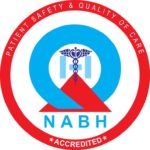
Diabetes Management effectively requires a deep understanding of how blood sugar levels fluctuate, the role of continuous glucose monitoring, A1C levels, and how diet and medications impact overall health. This guide provides essential information for those with Type 1 or Type 2 diabetes and prediabetes, along with expert advice on glucose monitoring tools and dietary tips.
What is Diabetes?
Diabetes mellitus is a chronic condition where the body either does not produce enough insulin or is unable to use insulin effectively. This results in elevated blood sugar levels, which can lead to severe complications if not managed properly.
Types of Diabetes
- Type 1 Diabetes: An autoimmune condition where the body attacks insulin-producing cells in the pancreas. People with Type 1 diabetes require insulin therapy to manage their blood sugar.
- Type 2 Diabetes: A metabolic disorder where the body becomes resistant to insulin. Lifestyle modifications, medications, and sometimes insulin therapy are used to control it.
- Prediabetes: A condition where blood sugar levels are elevated but not high enough for a diabetes diagnosis.
Continuous Glucose Monitoring (CGM)
CGM is a technology that allows individuals with diabetes to monitor their glucose levels continuously. Devices like the Dexcom G6 and Omnipod 5 provide real-time data, which helps in making timely adjustments to diet, exercise, and medications.

Understanding A1C Levels
A1C is a blood test that shows the average blood glucose levels over the past three months. Maintaining a target A1C level is crucial for diabetes management. The American Diabetes Association recommends an A1C level of less than 7% for most adults with diabetes.
Diabetes Management with Insulin and GLP-1 Therapy
Insulin therapy is a cornerstone for Type 1 diabetes and is often necessary for Type 2 diabetes. Toujeo and Lantus are popular long-acting insulins that help maintain stable blood glucose levels. GLP-1 receptor agonists, like those offered by GLP1 therapies, are newer treatments that assist with blood sugar control and weight loss.
Blood Sugar Monitoring Options
There are various tools available for blood sugar monitoring, from traditional glucometers to advanced continuous glucose monitors (CGMs). Here’s a comparison of popular options:
| Device | Type | Cost | Accuracy |
| Dexcom G6 | CGM | High | Very High |
| Freestyle Lite | Glucometer | Moderate | High |
| One Touch Ultra | Glucometer | Moderate | Moderate |
| Accu-Chek Guide | Glucometer | Low | Moderate |
Diabetes-Friendly Diet
A balanced diet is essential for managing diabetes. Foods low in glycemic index (GI) and rich in fibre help control blood sugar levels. Some recommended options include whole grains, leafy greens, and lean proteins. Snacks for diabetics can include items like nuts, Greek yogurt, and apple slices with almond butter.
Sample Meal Plan for Diabetics
This sample plan helps maintain stable blood sugar levels:
- Breakfast: Scrambled eggs with spinach and whole-grain toast
- Lunch: Grilled chicken salad with mixed greens, cucumber, and olive oil dressing
- Dinner: Salmon with steamed broccoli and quinoa
- Snacks: Nuts, Greek yogurt, and carrot sticks
Conclusion
Managing diabetes requires a multifaceted approach, from regular monitoring of blood sugar levels to maintaining a balanced diet. Advances in technology, such as continuous glucose monitors and GLP-1 therapies, make it easier than ever to manage the condition effectively. Consult with an endocrinologist to tailor the best management plan to your unique needs.





